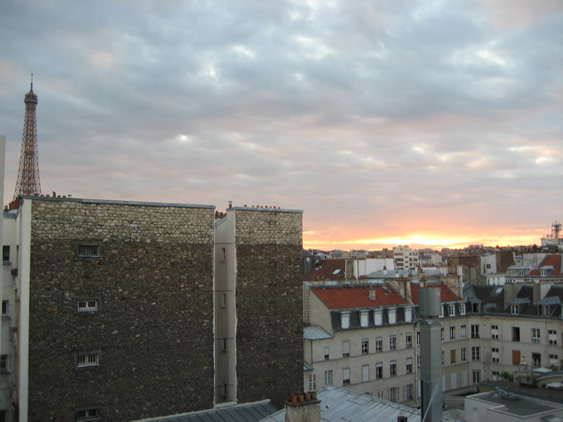July 11, 2007
Today was to be another brisk march through Paris, concentrating on some of the older neighborhoods. We were also going to be checking out the Place des Vosges and Paris' lead museum of modern art, the Pompidou Center.
We jumped off the metro near the home of the mayor of Paris. Julie told us an excellent story about how the mayor of Paris has his own wine cellar, started by Jacques Chirac (who went on to be President) at which he drank some of the choicest bottles of wine available, whether there were guests or not. I kind of admired that a politician could be so up front in their venality. It'd be refreshing to see one of those ballot mice admitting that you liked not having to wait for stoplights, or they preferred seeing their enemies made fun of on television, or as I phrased it, "Whooo's having an extra-super-duper bottle of wine at dinner tonight? MEEEEEEEEE!"
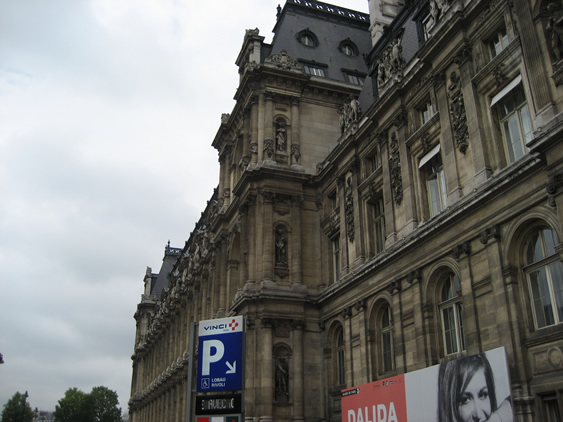
We were walking through the various hotels (which is the French word for mansion) in the area, and we happened to be in a historically Jewish neighborhood. We came across a street called Allee des Justes, named for those who protected the Jews in France from the Nazi occupation through various means. Black signs dotted the buildings in memoriam to those from this area lost at Auschwitz, Treblinka, Sobibor, and other death camps.
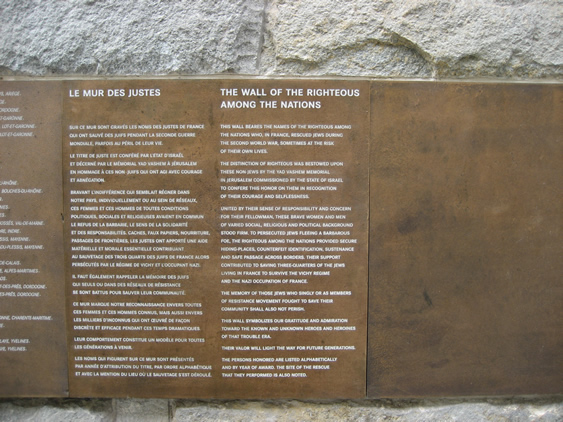
"How you can you be anti-Semitic in Europe?" I asked Julie. "The reality of what happened is everywhere around you." Neither of us would have any better understanding of this than we ever would in America. For us, each of the two world wars was far away, in black and white. This was the closest I'd gotten to the reality of any of it.
Our day continued past a building that had been struck by cannon fire during one of the three French Revolutions. A cannonball got stuck in the masonry; the date commemorating it was engraved below the shot: July 28, 1836. I am a sucker for this sort of history and stood there in the middle of the street for a moment, digging the fact that the view I was looking at had been that way for nearly two centuries, when we dodged an oncoming Smart Car.
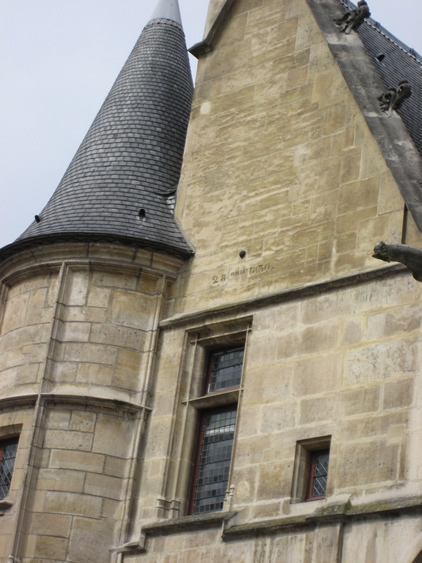
We wound up running into a bunch of kids, probably eight or nine, sitting on the ground, like they were waiting for something. It wasn't until we got closer that we realized what they were doing: they were drawing the building we were looking at. I would have been unable to resist the temptation to draw the cannonball bigger. We didn't stick around to critique them.
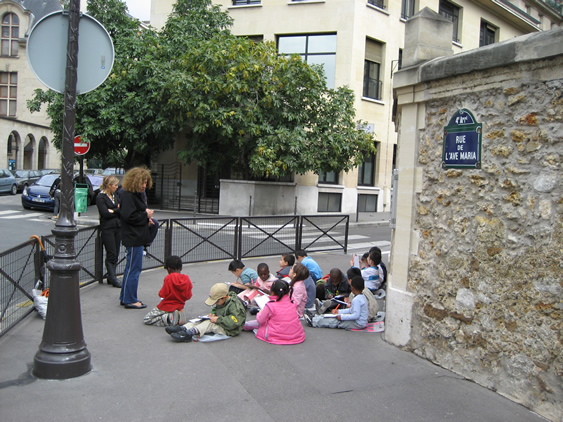
Julie was heading us toward the Place des Vosges, her favorite place in Paris. It was a square designed with proportion and geography in mind, so the placement of every tree, the height of all of the buildings, how far apart all of their windows and doors were, all set to a precise mathematical ratio. It was impressive.
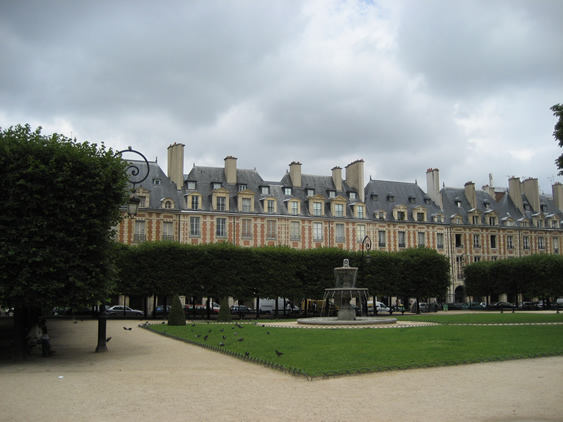
We were faced with a break before taking on the history of Paris. We saw that there were two cafes on opposite sides of the street. Julie looked at me.
"Which one?"
You couldn't have told these joints apart in a police lineup. Busy lunch crowds, out-of-the-way street, chalkboard menus, the menu would be excellent, what did I have to lose?
"That one," I said, pointing down the block. We walked the extra 500 feet. We immediately knew we'd made the right choice.
One of the items on the menu was rascasse, an item that none of us were able to translate in three different languages. We knew it was a fish. That was about it. But as we were sitting down to dinner on Sunday night after our quiet day, we didn't even know that much. Julie found out something in German that made it clear that the fish looked like this:
It means "dragon fish" or "scorpion fish" in German. "Hot damn!" I told Julie when I saw the above picture. "If I eat one of those I think I'm doing the ocean a favor."
Julie and I couldn't resist. Le menu, rascasse, sil vous plait. Ken ordered something else. Julie grinningly pointed out that here and I were now members of Club Rascasse, devoted exclusively to devouring these menaces of the deep. They were tasty-a lot like swordfish, with a texture that wasn't as firm. A little tarragon sauce came with it, and it was excellent. So the next time you're scuba diving and you don't come face-to-face with THAT, well, you're welcome.
We marched on further through the current home of the Paris Historic Preservation Society, which had tremendous gardens and its original 17th century ceilings. In their bookstore, they also had photos of the cathedrals we had seen the day before at Reims, covered to the tops of the entryways with sandbags. At one point a bomb struck near there and started a fire, which melted the sand into glass; the molten sandbags then ruined the facades on the west sides of the entrance. The restoration that was currently taking place would repair this.
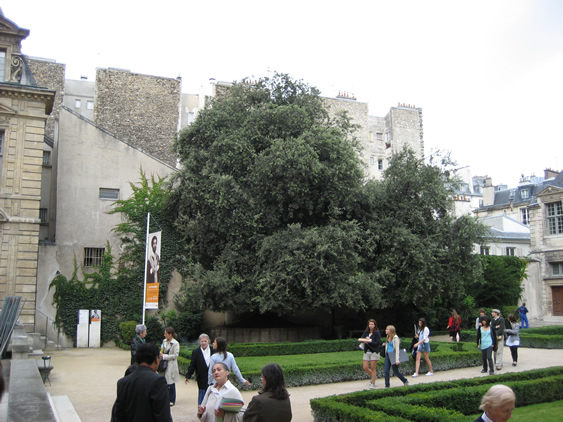
We hit the Picasso Museum, which was donated so that the family wouldn't have to pay estate taxes. This guy worked in everything, and in the beginning you could see he was trying his damnedest to follow the rules and paint like everybody else.
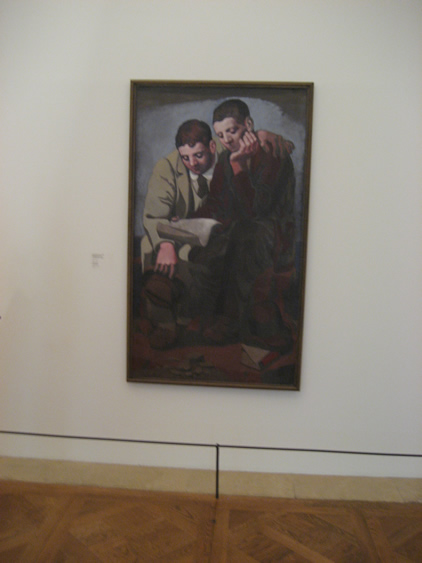
Then you see that later on, he got to be Pablo Picasso, and could do it how he wanted. We saw pottery and videos and sculpture and painting. Now as a native Chicagoan, "Picasso" isn't a person as much as it is an object-the woman's silhouette/winged thing/skateboarding ramp that's outside of Daley Plaza. I laughed at the idea that the owner of the kiln where he learned to make pottery said that he would fire him on the spot. We also saw a phenomenon we felt was unique to the Musee Picasso, the idea that you could wear two different color socks and flaunt them proudly.
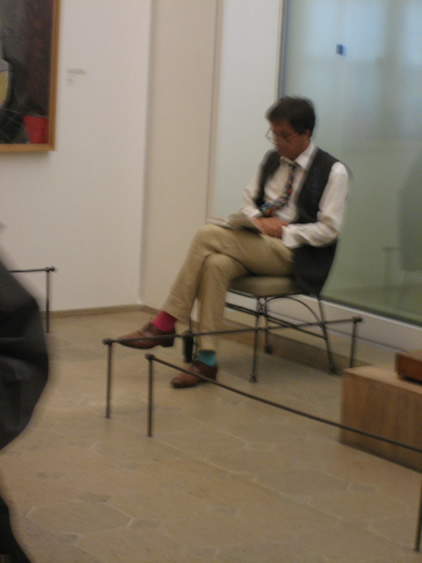
Then it was on to the Pompidou Center, a building that seemed to have been designed as a cocktail-napkin prank by obviously sozzled architect Renzo Piano. The building is supposed to be designed inside-out. You see scaffolding on the outside; the escalators are outside, the hot and cold water conduits are different colors and yes, they're on the outside. Parisians hated it at first, then grew to kind of sort of like and appreciate it. (I found that the same story applied to the Eiffel Tower, the Grande Arch at La Defense, the Pyramid entrance at the Louvre, and the Opera Bastille.)
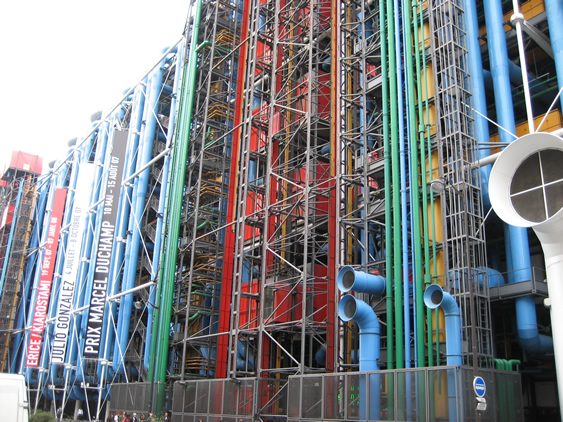
On our way in we were besieged by street performers. I have seen several mimes while in France but have refused to photograph them because I believe it only offers encouragement. Another gentleman looked over and said, in English, "Excuse me, sir? I have to draw you." I moved my hand curtly, like I was refusing to hit on 19. I mean, I know I have a rampaging ego (you aren't visiting someguyinfrance.com) but I'm in an oversized black windbreaker, hair moving in eight different directions, and a body closer to a stack of Gummi Bears than anything Michelangelo chiseled. Save it for someone more naive.
Inside the Pompidou, the lobby is a very aggressive representation of The Future. It's predominantly black, and there's escalators taking you to the various galleries. The museum is really only the top two floors, and they're indicated by neon. It reminded me of the Omnimax and Space exhibits at the Museum of Sciene and Industry. Harsh bright neon announcing The Future. There was a large-format exhibit that seemed designed to showcase its own weirdness, a series of pulleys with large vinyl stuffed organs dropping at random times onto a collection of stuffed punching bags a story below, with a dummy being dragged around the punching bags by a mechanical pulley. You could go back and read that description a thousand times and I'll show you all the pictures, and I promise you, you won't get it. You and I could sit next to each other for a half an hour, and I'll use all sorts of hand gestures about how the big stuffed heart would just go zzzziiiiPPPP and fall towards the punching bags, then be slowly raised back up, and you still wouldn't get it.
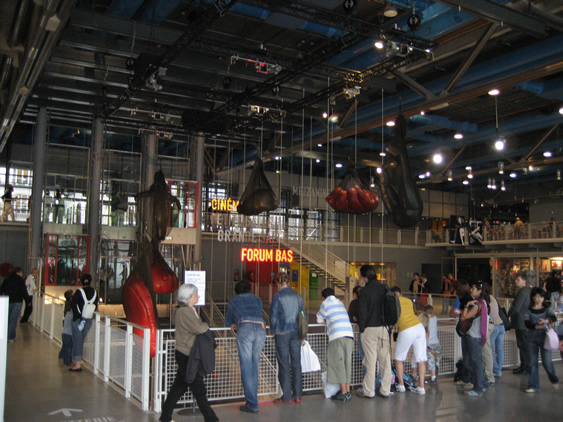
Now I've always like modern art because I'm not overwhelmed by it; I can look at something like 100 Boots and laugh (an American artist sent a series of postcards that told the story of 100 rubber galoshes trekking cross country to their current home at the Museum of Modern Art in New York) and look at anything by Keith Haring and smile, or look at something by David Hockney and know what a sunny day out West feels like (even though he's British, a country I'd already seen is the antithesis of his paintings). Some people crinkle their noses and say, "Now how the hell can that be called ART? It's just a frame with some string and a cardboard triangle that says "Tabac-Rat" and the guy's name on it REAL BIG! That's not ART, it's where the art's s'posta GO!" And I laugh because I realize that the artist, Francis Picabia, was trying to say exactly the same thing. He did a painting called "The Animal Trainer" that he deliberately dated eight years into the future because that was the vibe he was getting from the exhibition, that they wanted to predict the future and the artists who would shape it. I got the feeling that he was sick of the rules, sick of the gallery owners, sick of the whole game, and I came away from the Pompidou Centre with a new favorite artist.
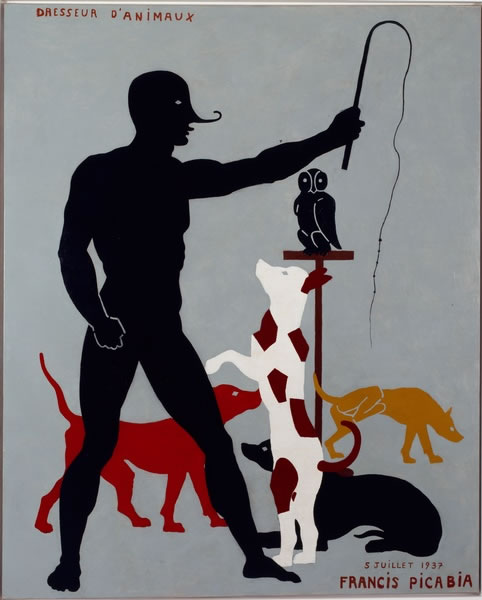
We were nearly finished when I saw a woman walking along who had-was it really? Yep-two different-colored socks! When I went back to study the picture, I noticed something even more alarming-the older woman who was probably her mother, had on white socks with two different colored borders at the top. We zoomed in on this photo like it was the Zapruder film. There was probably a trend coming, probably to combat the gnomes who were stealing socks from their dryer.
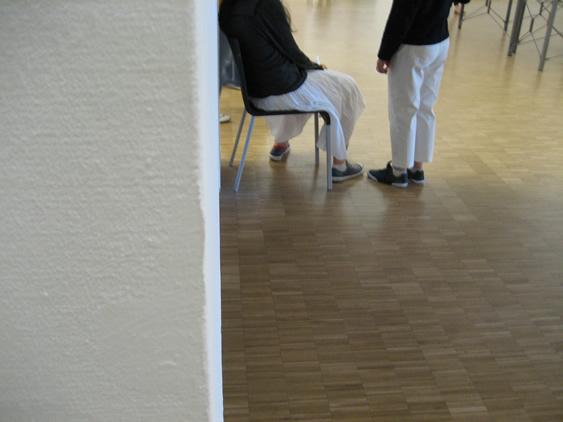
Because of the sheer volume of pictures I was taking, I liked to take photos of things like bizarre footwear, two different colored socks, and unironic berets.
By the end of this we all had a hardcore case of museum feet, so we made our way back towards the apartment. Tonight would be writing and sandwiches. I closed out the Wimbledon entry and was soon asleep.
